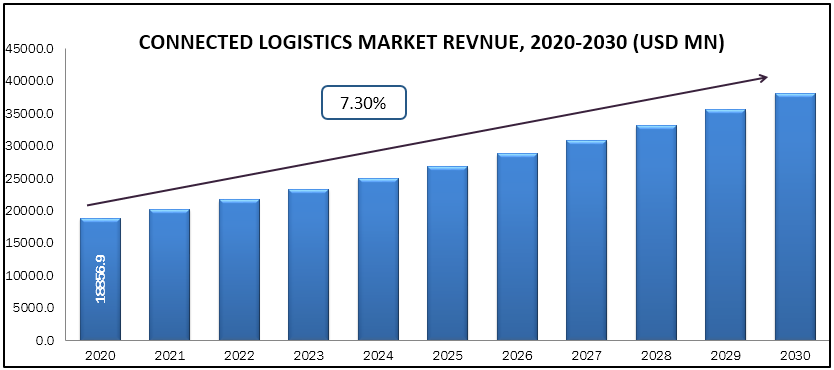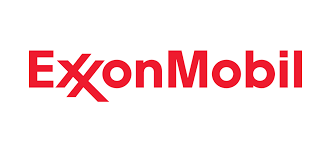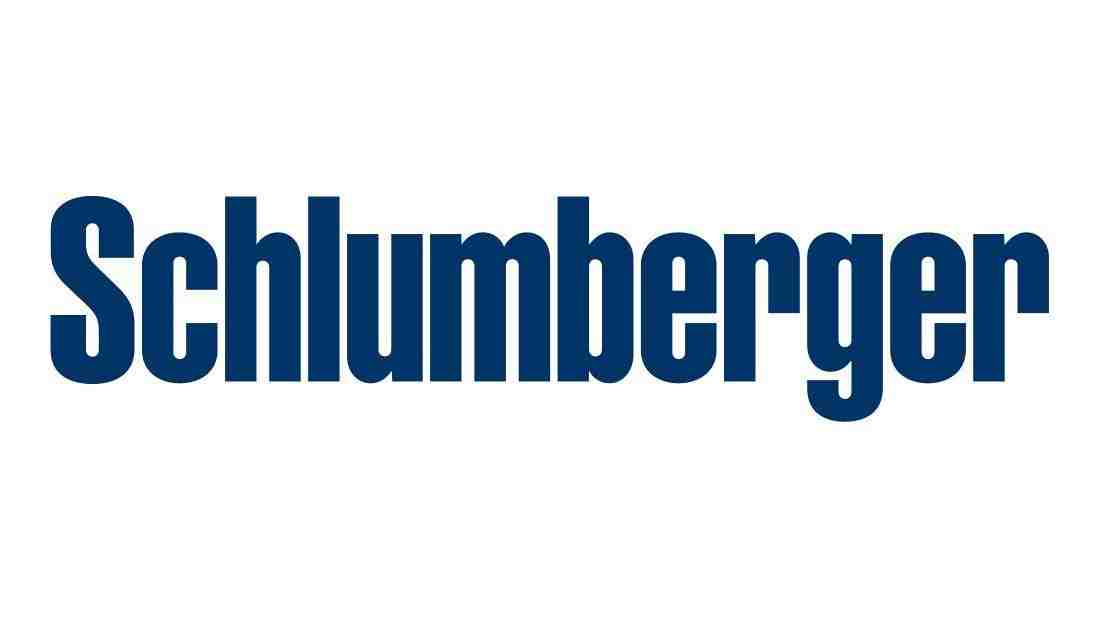Connected logistics technology refers to a group of communication devices, advanced network connections, and Internet of Things (IoT) technologies in order to make the conventional logistic processes more customer-centric. This technology enhances the operational efficiency of various logistical operations. Connected Logistics equip logistical businesses with real-time updates, interoperability, and easier access to required information. It provides interface to integrate multiple devices that enables robust and efficient decision making. The connected logistics technologies include fleet management, warehouse management, transportation, tracking, monitoring, and other associated logistic processes like financial transactions, order processing, dispatching, and shipping. Additionally, connected logistics also enables communication between all parties involved, although they don’t have any direct connectivity. The Connected Logistics Market are projected to reach USD 38147.6 million by 2030 from USD 18856.9 million in 2020, at an approximate CAGR of 7.3%.
Market Segmentation:
On the basis of services, the market can be classified into asset management, remote asset tracking, security, network management, and data management. Based on platform, the market is categorised into connectivity management, device management, and application management. By technology, the connected logistics market is segmented into cellular, Bluetooth, wi-fi, zigbee, near field communication (NFC), and satellite communication. According to devices, the market is divided into sensor nodes, gateways, and radio frequency identification (RFID) tags. On transportation basis, the connected logistics market is segmented into roadways, airways, railways, and seaways. Based on end users, the market can be classified into BFSI, retail, consumer products, telecom, aerospace & defence, food & beverages, media & entertainment, manufacturing, healthcare, travel & hospitality, energy, and others. Geographically, the market can be broadly divided into five regions mainly North America, Europe, Asia Pacific, and RoW.
Market Dynamics and Factors:
The rise in need for mobility, cost reduction of administrative processes, penetration of IoT & Logistics 4.0, and the growing market for connected devices is augmenting the connected logistics market growth. The rapidly increasing market for intelligent transportation solutions is expected to fuel the connected logistics market growth. Internet explosion and growing affordability of IoT services like RFID, sensors are the major factors driving the growth of the connected logistics market. Big data and analytics platforms are equally contributing to the rising industry growth. This is also strengthened by the rise of new technological developments like wearable devices, embedded sensors. Other major factors includes numerous technological solutions providing common platforms like M2M communication systems, platform integration that offers convenience for supply chain management. However, the lack of awareness about benefits and reluctance to accept new technological developments is restraining the connected logistics market growth.
Geographic Analysis:
North America is expected to dominate the global connected logistics market in terms of revenue market share during the forecast period. Connected logistics market revenue in North America is expected to grow thrice during the forecast period. The NA region is an early adopter and manufacturer of digital solutions due to the presence of many key players, and hence, continues to generate significant amount of returns for the stakeholders. For instance, the U.S. represents the most lucrative growth prospects, and would hit 10 billion USD towards the end of the foreseeable period. The Asia Pacific region is also showing investment opportunities, because of rapid technology penetration to develop logistics and product traceability. Influenced by an expanding customer base, companies in the APAC region are increasingly embracing connected logistics in order to improve efficiency in terms of time and cost.
Competitive Scenario:
The key players operating in the market are –
AT & T Inc., IBM Corporation, Cisco Systems Inc., Intel Corporation, Oracle, Zebra, Infosys Limited, Cloud Logistics, SAP SE, GT Nexus, Eurotech S.P.A, Losant IoT.
Connected Logistics Market Report Scope
| Report Attribute | Details |
| Analysis Period | 2020–2030 |
| Base Year | 2021 |
| Forecast Period | 2022–2030 |
| Market Size Estimation | Million (USD) |
| Growth Rate (CAGR%) | 7.3 % |
|
| By Services (Asset Management, Remote Asset Tracking, Security, Network Management, and Data Management), By Platform (Connectivity Management, Device Management, And Application Management), By Technology (Cellular, Bluetooth, Wi-Fi, Zigbee, Near Field Communication, And Satellite Communication), By Devices (Sensor Nodes, Gateways, And Radio Frequency Identification (RFID) Tags), By Transportation (Roadways, Railways, Airways, And Seaways), By End-Use |
| Geographical Segmentation | North America (U.S., Canada, Mexico) Europe (UK, Germany, Italy, France, Rest of Europe), Asia-Pacific (China, Japan, India, Australia, Rest of APAC), South America (Brazil, Argentina, Rest of SA), MEA (UAE, Saudi Arabia, South Africa) |
| Key Companies Profiled | AT & T Inc., IBM Corporation, Cisco Systems Inc., Intel Corporation, Oracle, Zebra, Infosys Limited, Cloud Logistics, SAP SE, GT Nexus, Eurotech S.P.A, Losant IoT. |
|
|
|







